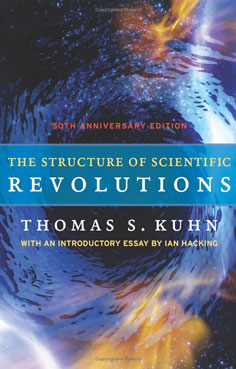Over fifty years ago, in 1962 Thomas S. Kuhn’s book The Structure of Scientific Revolution was published. It is an important work because if helps to explain how things work, and its findings I think are widely applicable beyond the scientific community.
 Amazon says of the book “Kuhn challenged long-standing linear notions of scientific progress, arguing that transformative ideas don’t arise from the day-to-day, gradual process of experimentation and data accumulation but that the revolutions in science, those breakthrough moments that disrupt accepted thinking and offer unanticipated ideas, occur outside of “normal science,” as he called it. Though Kuhn was writing when physics ruled the sciences, his ideas on how scientific revolutions bring order to the anomalies that amass over time in research experiments are still instructive in our biotech age.”
Amazon says of the book “Kuhn challenged long-standing linear notions of scientific progress, arguing that transformative ideas don’t arise from the day-to-day, gradual process of experimentation and data accumulation but that the revolutions in science, those breakthrough moments that disrupt accepted thinking and offer unanticipated ideas, occur outside of “normal science,” as he called it. Though Kuhn was writing when physics ruled the sciences, his ideas on how scientific revolutions bring order to the anomalies that amass over time in research experiments are still instructive in our biotech age.”
His central thesis is that the evolution of ideas, where one set builds on the previous set does not adequately explain what happens in practice. Actually, new ideas often emerge away from the main stream, are often rejected by incumbents, thanks to positional power and authority, but some ideas, quite suddenly become the new normal, and become mainstream in their own right.
He argues that people in positions of power and influence tend to operate with a specific frame of reference, which makes it difficult for them to accept information which does not chime with their own views. Sometimes, though, revolutions do happen and as a result, we see quite sudden revolutionary changes in the accept norms.
I believe the RBA’s stance on macroprudential is an interesting example. How come that up to a couple of months ago, they were quite sanguine on the housing market, and dismissed macroprudential as a fad. Yet now, judging by recent comments, they are expressing concerns about the housing market, and we expect to see some form of macroprudential intervention before the end of the year. The data highlighting issues in the housing sector have been amassing for some time now, yet the RBA appears to have suddenly twigged and become a late convert.
Kuhn’s thesis seems to neatly explain the change.

One thought on “Macroprudential, Revolutions and the RBA”